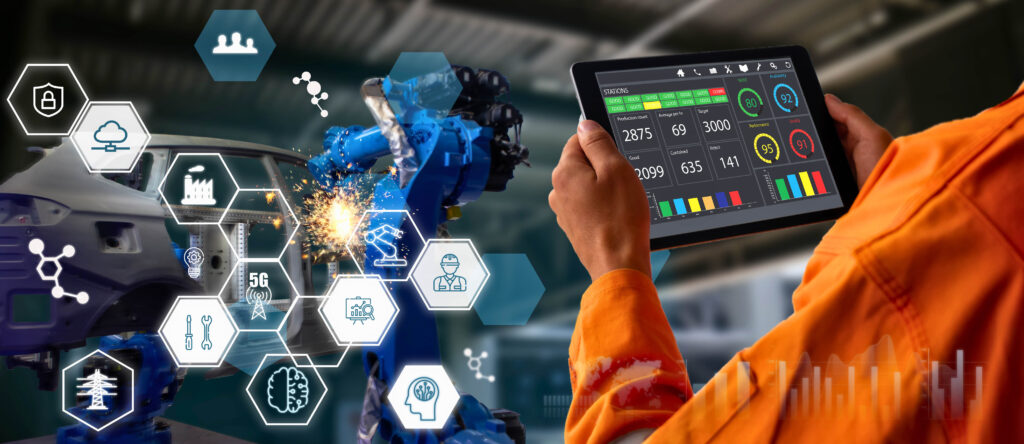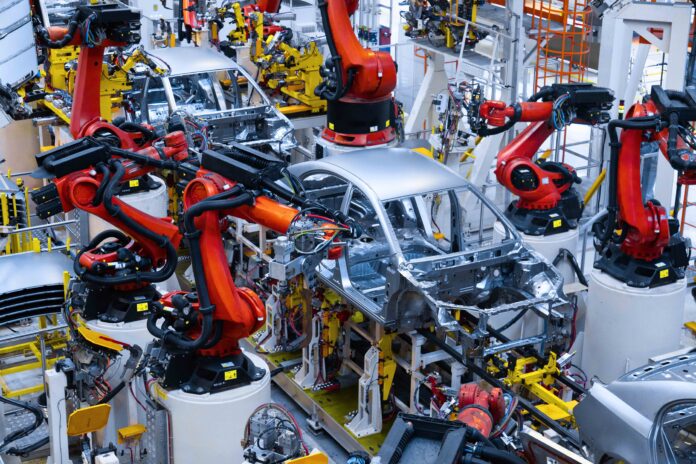Introduction
The automotive manufacturing industry stands at the forefront of technological innovation, constantly evolving to meet the demands of a competitive global market. Among the most significant advancements in recent years is the adoption of the Internet of Things (IoT). IoT has the potential to revolutionize car manufacturing plants by enabling real-time monitoring and predictive maintenance. This transformation is not just about connecting machines to the internet; it’s about creating an interconnected ecosystem where data flows seamlessly, driving smarter decisions, optimizing production processes, and minimizing costly downtime.
The traditional approach to maintenance in manufacturing plants has often been reactive, addressing issues only after they arise. However, with IoT, the paradigm shifts towards a proactive and predictive model. Sensors embedded in machinery constantly collect data on performance, wear and tear, and environmental conditions. This data is then analyzed in real-time, enabling manufacturers to identify potential issues before they lead to breakdowns. In this article, we will explore how IoT facilitates real-time monitoring and maintenance in car manufacturing plants, the benefits it offers, and the challenges that must be overcome to fully realize its potential.
The Evolution of IoT in Manufacturing

IoT is not a new concept, but its application in manufacturing has grown exponentially in recent years. Initially, the focus was on automating processes to reduce human error and increase efficiency. Over time, the capabilities of IoT have expanded to include advanced data analytics, machine learning, and artificial intelligence (AI). In the context of car manufacturing plants, IoT has moved beyond simple automation to become an integral part of the entire production lifecycle.
The implementation of IoT in manufacturing involves the integration of various technologies, including sensors, edge computing, cloud computing, and AI. Sensors are the backbone of IoT, collecting data from machines and transmitting it to central systems for analysis. Edge computing allows for data processing closer to the source, reducing latency and enabling faster decision-making. Cloud computing provides the scalability needed to store and analyze vast amounts of data, while AI helps to identify patterns and predict outcomes.
Real-Time Monitoring: A Game Changer for Car Manufacturing
Real-time monitoring through IoT enables car manufacturers to have a constant pulse on their production processes. Every machine, tool, and component within the manufacturing plant can be equipped with sensors that track various parameters, such as temperature, pressure, vibration, and operational speed. This data is transmitted in real-time to a centralized monitoring system, where it is analyzed to detect anomalies or deviations from normal operating conditions.
One of the most significant benefits of real-time monitoring is the ability to detect and address issues before they escalate into major problems. For example, if a machine begins to vibrate more than usual, it could be an early sign of a mechanical issue that, if left unaddressed, could lead to a breakdown. By identifying this anomaly early, maintenance teams can intervene and fix the problem before it causes significant disruption.
Furthermore, real-time monitoring allows for better quality control. In car manufacturing, precision and consistency are crucial. IoT-enabled systems can monitor the production process at every stage, ensuring that each component meets the required specifications. If a deviation is detected, the system can alert operators to make the necessary adjustments, preventing defects and reducing waste.
Predictive Maintenance: Reducing Downtime and Costs

One of the most transformative aspects of IoT in car manufacturing is its role in predictive maintenance. Traditional maintenance strategies often involve routine inspections and scheduled downtime for repairs. While this approach can prevent some issues, it is not always efficient. Machines may undergo maintenance even when it is not necessary, leading to unnecessary downtime and lost productivity. On the other hand, unexpected breakdowns can occur between scheduled maintenance, causing costly disruptions.
Predictive maintenance, powered by IoT, offers a solution to these challenges. By continuously monitoring the condition of machinery and analyzing data for signs of wear and tear, IoT systems can predict when a machine is likely to fail. This allows maintenance teams to perform repairs only when needed, minimizing downtime and extending the lifespan of equipment.
For instance, in a car manufacturing plant, the assembly line is a critical component that must operate smoothly to meet production targets. If a key piece of equipment on the assembly line fails unexpectedly, it can bring the entire production process to a halt. With predictive maintenance, sensors on the equipment can detect subtle changes in performance, such as increased vibration or temperature, that may indicate an impending failure. Maintenance teams can then schedule a repair during a planned downtime, avoiding the disruption of an unexpected breakdown.
Predictive maintenance also has financial benefits. By preventing breakdowns and optimizing maintenance schedules, manufacturers can reduce the cost of repairs and spare parts. Additionally, by extending the lifespan of machinery, companies can delay the need for costly capital investments in new equipment.
IoT-Driven Process Optimization
Beyond monitoring and maintenance, IoT plays a crucial role in optimizing the overall manufacturing process. The data collected from sensors provides valuable insights into every aspect of production, from the efficiency of individual machines to the flow of materials through the plant. This data can be used to identify bottlenecks, streamline operations, and improve productivity.
For example, IoT can help manufacturers optimize the use of energy within the plant. Sensors can monitor energy consumption in real-time, identifying areas where energy is being wasted and suggesting ways to reduce consumption. This not only lowers operating costs but also supports sustainability efforts.
Moreover, IoT can enhance supply chain management by providing real-time visibility into inventory levels, production schedules, and logistics. Manufacturers can track the movement of materials and components through the supply chain, ensuring that everything arrives on time and in the right quantities. This reduces the risk of delays and disruptions, enabling manufacturers to meet customer demands more effectively.
Challenges and Considerations in Implementing IoT
While the benefits of IoT in car manufacturing are clear, implementing this technology is not without its challenges. One of the primary concerns is data security. With so many devices connected to the internet, there is an increased risk of cyberattacks. Manufacturers must invest in robust cybersecurity measures to protect their data and systems from unauthorized access.
Another challenge is the integration of IoT with existing systems. Many car manufacturing plants have legacy equipment that was not designed to be connected to the internet. Retrofitting these machines with sensors and connecting them to IoT networks can be complex and costly. Manufacturers must carefully evaluate the cost-benefit ratio of integrating IoT into their existing infrastructure.
Additionally, the sheer volume of data generated by IoT devices can be overwhelming. Manufacturers need to have the right tools and expertise to analyze this data and extract meaningful insights. This may require investing in advanced data analytics platforms and hiring skilled data scientists.
Finally, there is the issue of scalability. As manufacturers expand their operations and adopt more IoT devices, they must ensure that their infrastructure can handle the increased data traffic and processing demands. This requires careful planning and investment in scalable technologies such as cloud computing and edge computing.
Conclusion
The integration of IoT into car manufacturing plants represents a significant step forward in the evolution of the automotive industry. Real-time monitoring and predictive maintenance enabled by IoT are transforming how manufacturers operate, leading to increased efficiency, reduced downtime, and improved product quality. However, the successful implementation of IoT requires careful consideration of challenges such as data security, system integration, and scalability.
As the automotive industry continues to embrace digital transformation, the role of IoT will only grow in importance. By leveraging the power of IoT, car manufacturers can stay ahead of the competition, meet the demands of a dynamic market, and drive innovation in manufacturing practices. The future of car manufacturing lies in the smart, connected factories of tomorrow, where IoT is the backbone of production, enabling manufacturers to build better, more reliable vehicles faster and more efficiently than ever before.
